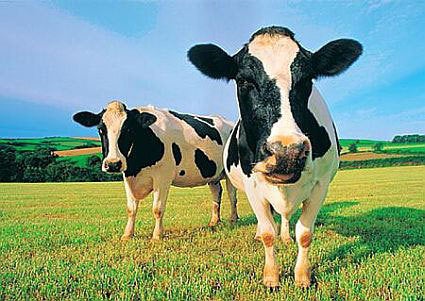
The trans-Atlantic phone lines were buzzing this year between the traditional bastions of high gastronomy in France and their up-and-coming counterparts in the U.S.. First it was the call from Paul Bocuse asking the New York-based Daniel Boulud and the California-based Thomas Keller to help field a team for the eponymous culinary competition, the Bocuse D'Or in Lyon. Then came the call from legendary French cheese monger Herve Mons to Manhattan cheese seller Murray's Cheese, retailer to the cognoscenti and cheese supplier to A-list restaurants ranging from Keller's French Laundry to New York's Jean Georges. Time to show that the artisan cheese industry in the US is more than a lot of hot air from the Slow Food and sustainable agriculture movements.
The reason for the call: to encourage Murray's to take a second stab at the International Caseus Awards, an Olympic-like event that has quickly become one of the world's premier showcases of the renewed vitality of the handmade artisan cheese industry since cholesterol obsession, the raw milk wars, and industrial dairy farming transformed the style and threatened the viability of many cheeses. Founded in 2005, the cheese awards, like the Bocuse D'Or, are held every other year at France's equivalent of the National Restaurant Association Show, the so-called "SIRHA" in Lyon. It's a veritable who's who of the gastronomy, hotel, and restaurant industry.
The cross-Atlantic kick in the pants paid off best this year for the American cheese mongers. After turning in a desultory first-time performance in its first voyage out for the Caseus awards in 2007, the American cheese team this year came steps away from the platform -- trailing the third-place Swiss by a hair -- after a seven-hour series tests including cheese cutting, wrapping, blind tasting, and sales presentation.
Despite Boulud's and Keller's high-profile involvement, the American chef at the Bocuse D'Or, Keller's sous chef Timothy Hollingsworth, came in only sixth with the Norwegians, Swedes, and French locking up the medals as they customarily have in the twenty-year-old competition. The strong performance of his cheese monger is probably cold comfort to Keller who helped round up sponsors to the tune of some half a million dollars for his sous and gave him several months of paid leave to train in a spanking new facility near the French Laundry. The American pastry team fared no better than Hollingsworth. After its chocolate sculpture crashed during the World Cup of Pastry, also held at the trade show, the team's hopes for a medal all but evaporated. It came in sixth.
France, no surprise, walked away with the gold, ahead of Japan in the cheese competition. Liz Thorpe, the American team's trainer and a manager at Murray's, noted with the unconcealed satisfaction of a gastronomic Cinderella, that Japan had acceded to the silver from the bottom of the pack in 2005 -- an identical trajectory. Although the U.S. team still has considerable ground to make up on other teams in the blind tasting department, it left the eleven other teams trailing in the dust with its sales presentation, designed to demonstrate facility with products and customer requests.
The team tied for first in three categories, including its showcase display and its packaging. With so many different kinds of cheese -- hard, soft, leaky, and crumbly -- the importance of wrapping cannot be overestimated, Thorpe said. In this recently added category of the competition, contestants must properly wrap 20 different cheeses in ten minutes. "Cheese mongers who don't know how to properly wrap their product are thumbing their noses at everything that precedes the final sale," Thorpe said.
Historically the deck was stacked against the American cheese producers. Murray's only started buying American cheeses about a decade ago. Most cheese was not very good and not very consistent, Thorpe said. "It's staggering how much this has changed," she said.
Currently at Murray's, nearly 40 percent of the cheese is American. Thorpe, who is writing a book on American cheese to be published this fall, says she typically receives as many as five new American cheeses a week to try.
The declining value of the dollar has certainly not hurt, making European cheeses more costly to import. But the number of artisan cheeses in the U.S. has more than doubled in the last two decades, most produced by farmstead cheese makers. During the last year, two producers cleared the hurdles at the U.S. Department of Agriculture to snag the first American export licenses for artisan cheeses.
This year's American team included two of Murray's cheese mongers, Frank Meilak and Zoe Brickley. For Meilak, who started in the business as a delivery person over two decades ago and is now a buyer for Murray's, the 2007 results represent a huge improvement over his first attempt in 2007. The team featured a Wisconsin raw milk Alpine style cheese, Pleasant Ridge Reserve, inspired by the French Beaufort. The cheese is made in Dodgeville, Wisconsin only during the summer with milk from grass-fed cows.